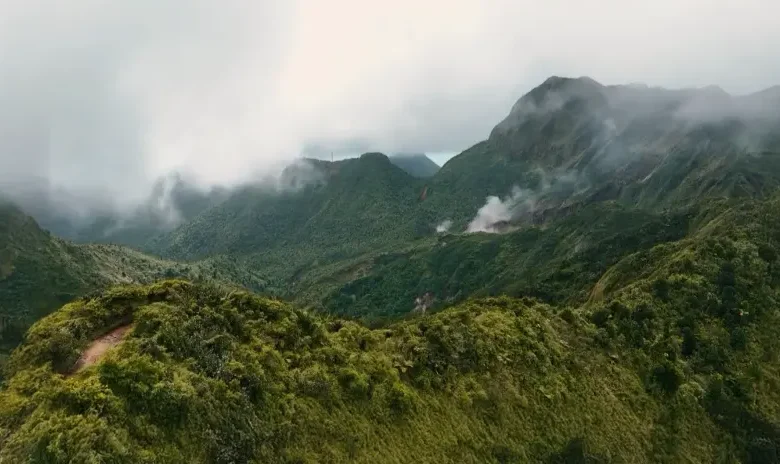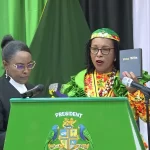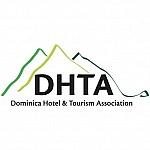Dominica’s Rugged Landscape

Dominica’s rugged terrain, shaped by volcanic activity, features steep mountains, deep valleys, and lush rainforests. As part of the Lesser Antilles volcanic arc, volcanic and tectonic forces have shaped the island’s landscape over millions of years. This dramatic topography influences nearly every aspect of life on the island, from agriculture to tourism.
Volcanic Origins and Geography
Dominica’s geological features result from its volcanic origins, with peaks such as Morne Diablotin and Morne Trois Pitons towering over 4,000 feet. Geothermal features like the famous Boiling Lake and numerous hot springs mark this rugged landscape. The fertile volcanic soil supports Dominica’s agriculture, particularly in regions like the Layou Valley, known for its bananas.
Climate and Terrain Interactions
Dominica’s terrain directly affects its climate, creating microclimates ranging from lush, wet, mountainous rainforests in the eastern highlands to drier lowland areas. The mountainous regions, particularly on the windward side, experience heavy rainfall, contributing to the island’s abundant rivers and waterfalls, such as Trafalgar Falls and Middleham Falls. These microclimates also enhance the island’s biodiversity, making it a prime destination for eco-tourism.
Adventure Tourism and Environmental Conservation
Dominica’s rugged landscape is ideal for adventure tourism, offering hiking, canyoning, and river tubing activities. The Waitukubuli National Trail, the Caribbean’s longest hiking trail, traverses the island’s varied topography, allowing visitors to experience its dramatic terrain, from volcanic landscape to deep gorges. Sites like Morne Trois Pitons National Park offer stunning vistas and opportunities for eco-tourism, while the island’s rivers and gorges provide adventures like canyoning and river tubing.
The challenge of developing infrastructure on such rugged terrain requires sustainable approaches. The government and local communities work to balance tourism with environmental protection, ensuring that activities are eco-friendly and minimize impact on the island’s fragile ecosystems.




